Liver pâté is like the heart and soul of Bánh Mì. Since moving to Germany, I’ve tried various liver pâté from German supermarkets, but none could come close to the flavors of the Vietnamese version.
After experimenting with and testing many recipes from Vietnamese home cooks, this recipe was born—it’s just like the liver pâté I used to enjoy with Bánh Mì while living in Ho Chi Minh City.

Table of Contents
Why Vietnamese Liver Pâté is special
Liver pâté, a delightful meat spread made from livers, was introduced to Vietnam during the French colonial period in the late 1800s. Since then, the Vietnamese have adapted it with local ingredients.

Our Vietnamese cuisine carries a strong French influence, along with elements of Southern Chinese (Cantonese) and a hint of Khmer flavors in the Mekong Delta region.
It’s incredible how our ancestors embraced and tweaked foreign recipes, turning them into the awesome and one-of-a-kind cuisine we have today.
Related Recipes | More Franco-Vietnamese dishes:
Where to buy delicious liver pâté in Vietnam
Well, typically, the best pâté is found at a renowned Banh Mi store (because let’s be honest, no Banh Mi shop could thrive without a scrumptious pâté).

However, if you’re looking to bring the goodness home, here are some recommendations:
- Nguyên Sinh Bistro – est. 1942. Yes, they’ve been around since the French colonization era.
- Bánh Mì Huynh Hoa. Very popular among the locals and tourists.
- Bánh Mì Nguyên Sinh – the branch of Nguyen Sinh Bistro in Hanoi.
- Bánh Mì Pate Cột Đèn – Hải Phòng is a port city in Northern Vietnam known for its exceptional liver pâté and squared crab spring rolls.
Ingredients
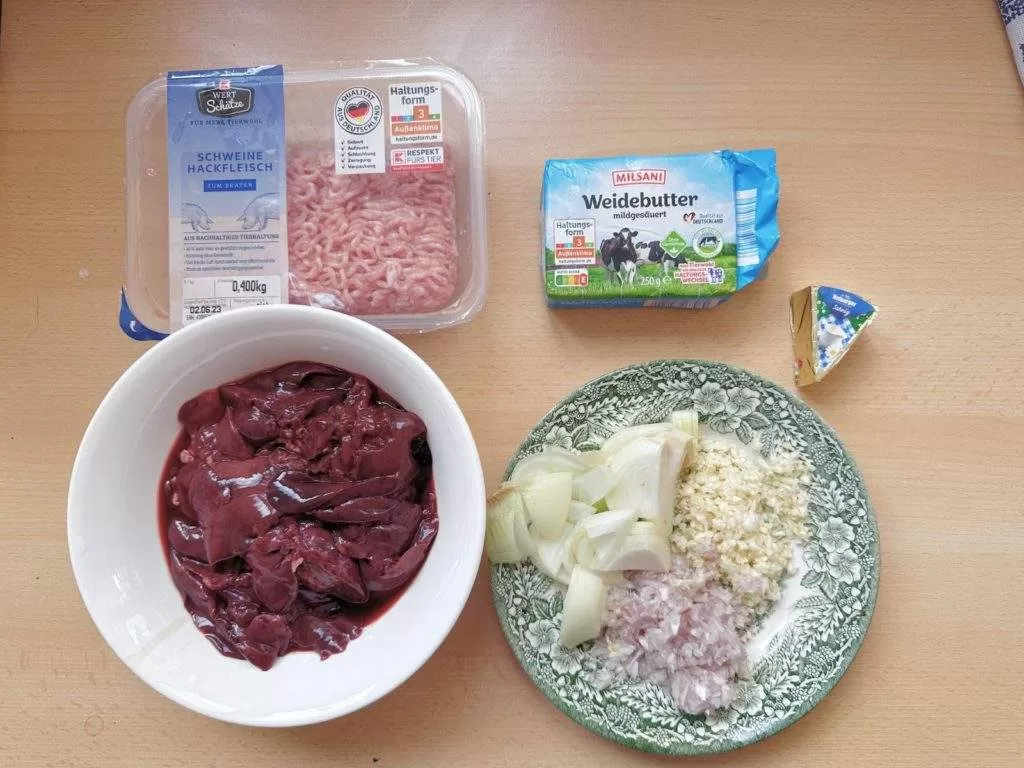
In Vietnam, liver pâté could be made from pork livers or chicken livers (pork livers are more popular) but I prefer the chicken version.
To remove the odor and enhance the flavors of livers, people often soak them in milk.
Seasonings
- The first tip for making your Vietnamese pâté smell amazing is to add a bit of Vietnamese five-spice powder and plenty of crispy fried garlic and shallots.
- For an easy shortcut, you cound substitute fried shallots with crispy fried onions (the ones for hot dog toppings).

Ratio
- The second tip for making a delicious liver pâté is to achieve the right texture with a proper ratio of livers, ground pork, and sandwich bread.
- In Vietnam, sandwich bread helps reduce costs and makes pâté firmer. If you love the flavor of livers, use more livers; if you prefer to consume fewer animal organs, use more ground pork.

Butter & Laughing Cow Cheese
- The third tip is adding Laughing Cow Cheese. Butter is essential for the richness of pâté. In Vietnam, people often use margarine from the brand “Tường An”. For a richer flavor, they add some Laughing Cow Cheese.
Steaming
- Tip four: Steam the pâté after blending. Once cooked and blended into a paste, the pâté is already delicious. However, you can elevate it further by steaming it for a while. This step makes the pâté softer and more melt-in-the-mouth.
Instructions
PREPARE THE INGREDIENTS
- Remove any tough connective tissue or yellow/white fatty parts. Cut then into bite-sized pieces if you use pork livers.
- Soak the livers in whole milk for a minimum of 30 minutes or refrigerate them overnight. After soaking, strain the livers and give them a thorough rinse to remove any remaining milk.
- Soak the sandwich in some milk for about 15 minutes before cooking.
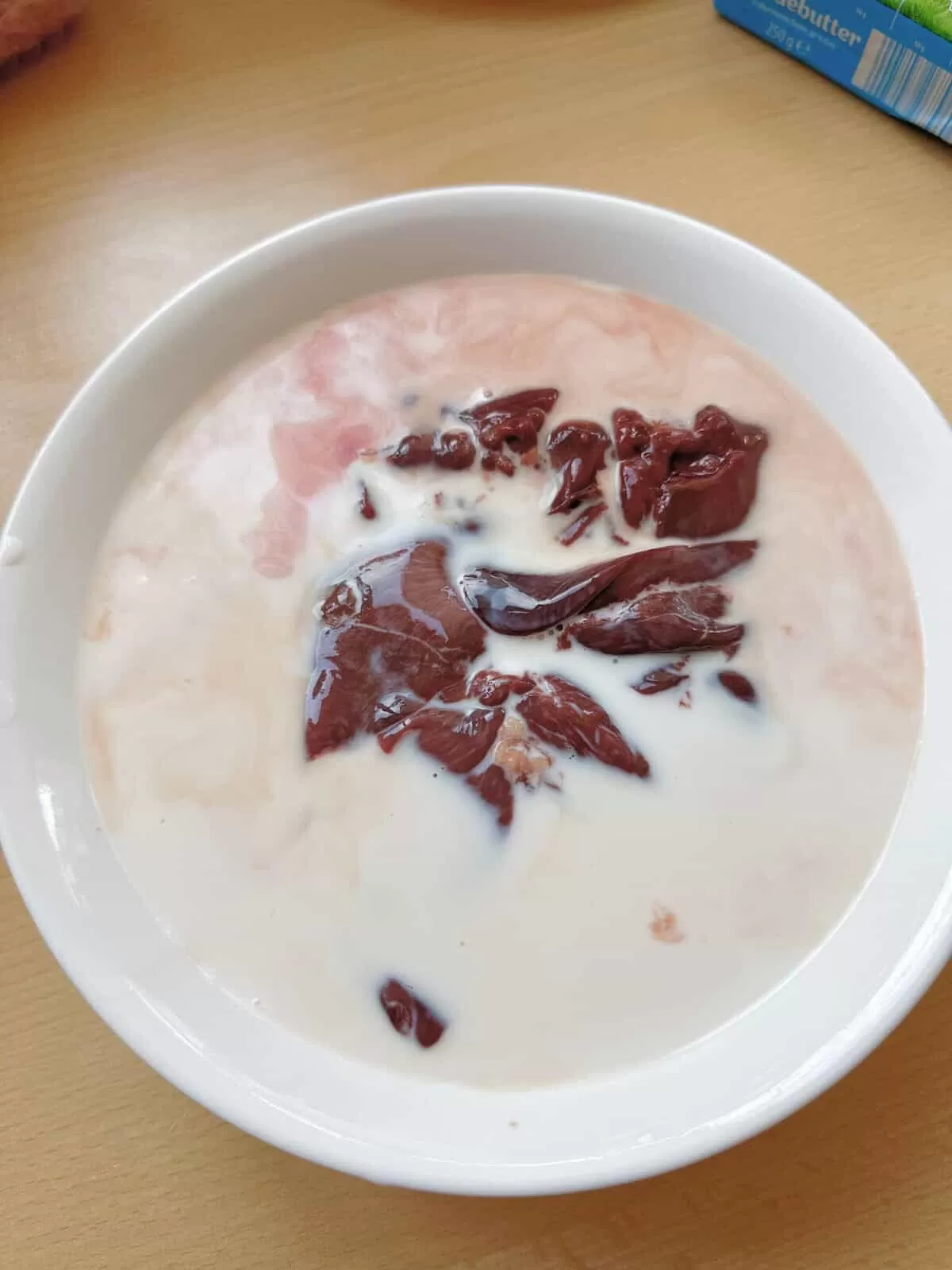

COOK
- In a pan, add cooking oil and heat it up. Once the oil is hot, add minced shallots and stir-fry for about 30 seconds. Then, add minced garlic (garlic can easily burn, so keep an eye on it).
- Once the shallots and garlic turn golden and crispy, quickly remove them from the oil to prevent burning. Leave around 2 tbsp oil in the pan.
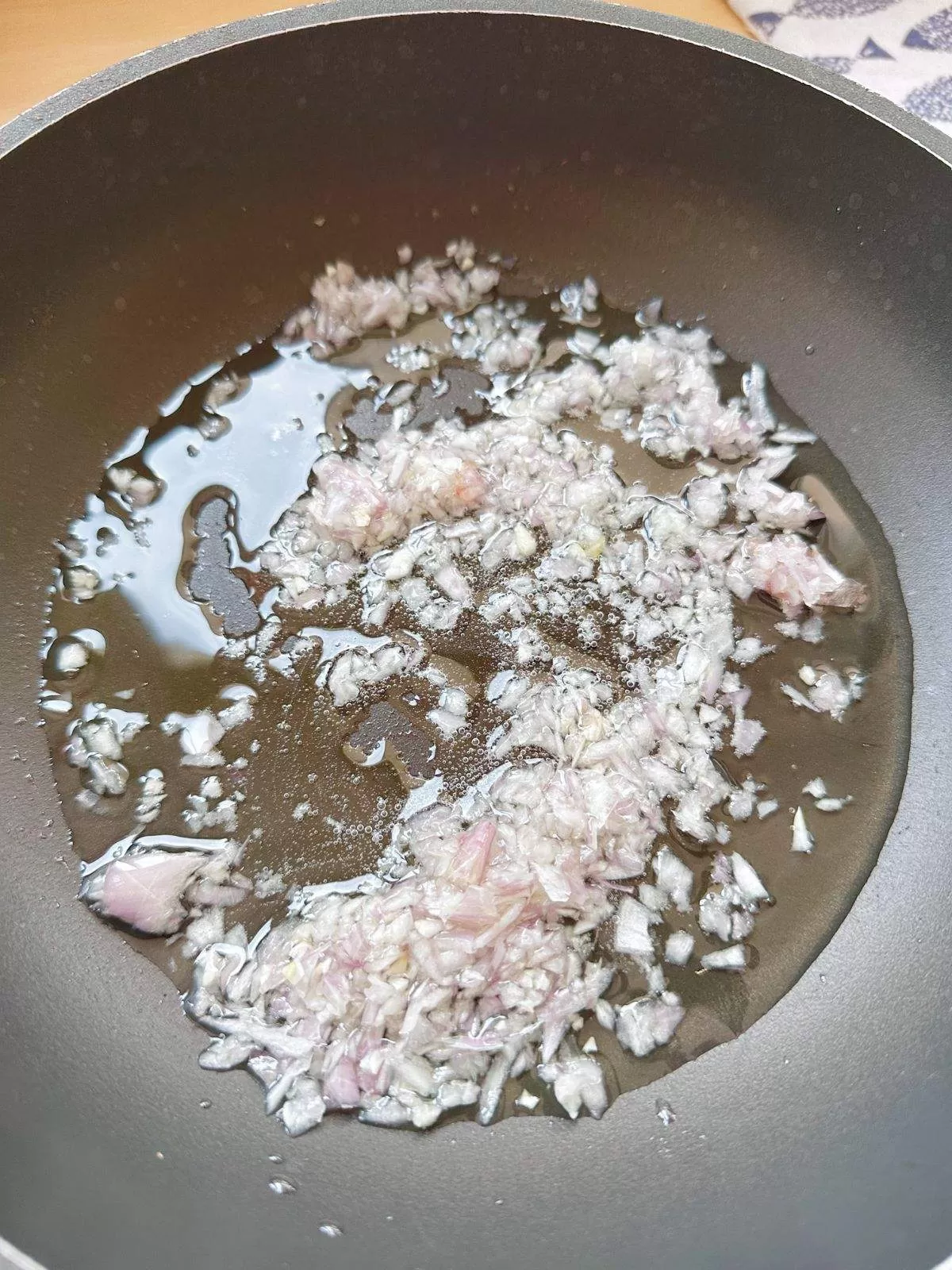
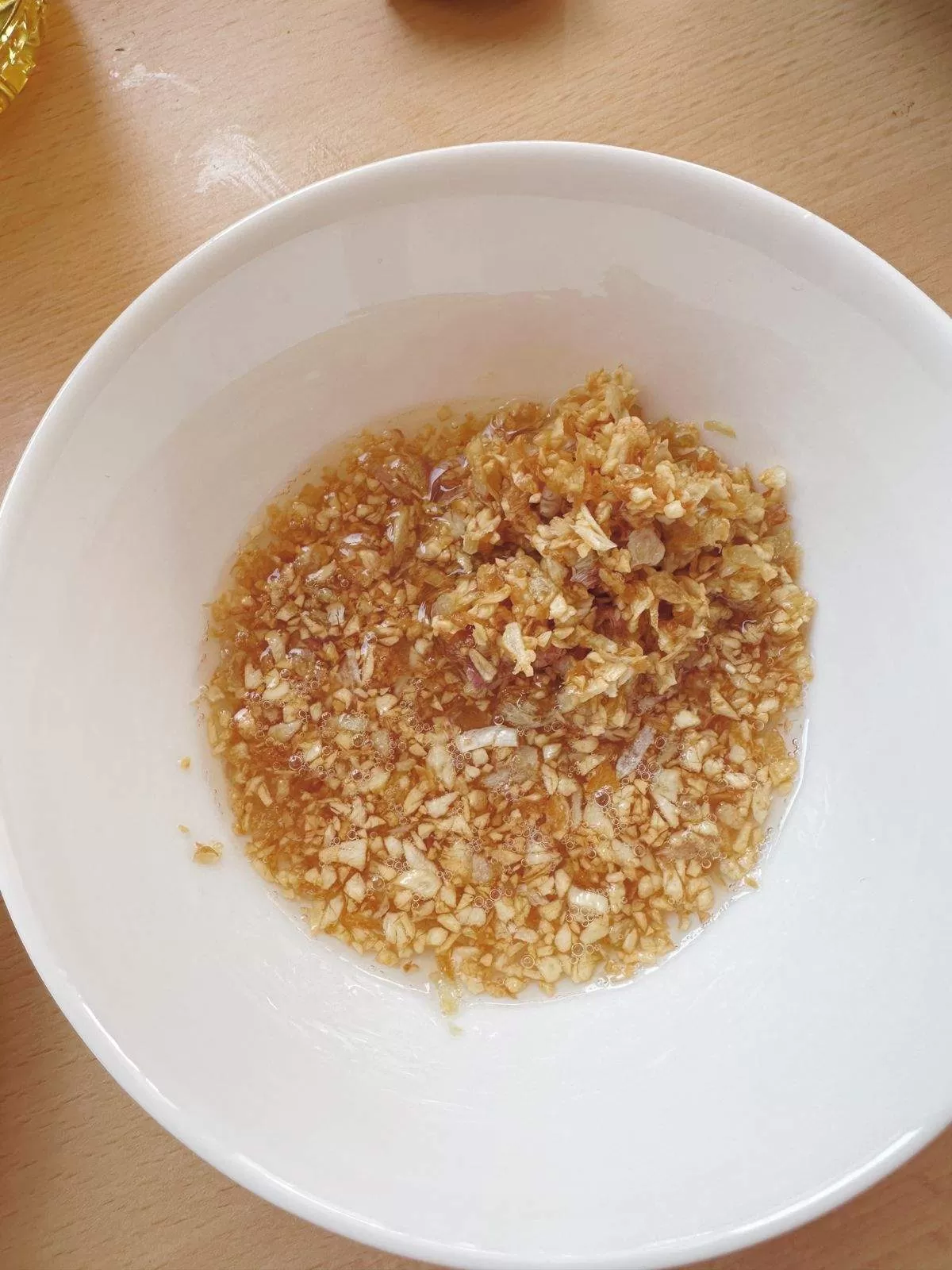
- Add the livers to the pan. Cook the livers for about 7 minutes or until it is cooked but still pink inside. Season the livers with chicken powder and five-spice powder. Set them aside.
- In another pan, melt the butter and sauté the sliced onion until fragrant. Add the ground pork and stir-fry until it is just cooked. Then, add the cooked livers and the soaked sandwich.
- Stir the mixture until well-combined and season it with salt, chicken powder, black pepper, and sugar according to your taste. Allow the mixture to cool down for 30 minutes.
- Once the mixture has cooled, add it to a food processor along with the fried shallots and garlic (including the oil), fried crispy onions (if available), laughing cow cheese (optional).

- Blend the mixture in the food processor until it reaches your desired level of smoothness. The texture of the pate can be adjusted based on your personal preference.
- Transfer the pate into a container and chill it in the fridge to allow it to firm up before serving.
STEAM (OPTIONAL)
- To further enhance the flavor and texture of the pate, Vietnamese often steam it for approximately 1 hour on medium-low heat or 7 minutes using an Instant Pot on low pressure.
- Before steaming the pate, transfer it into a mold and cover the mold with cling film or aluminum foil to prevent water from seeping in.
- After steaming, allow the pate to cool down. Then, chill it in the fridge before serving.

Helpful Tips

- Avoid overcooking the livers to prevent them from becoming bitter and dry.
- To achieve the perfect Vietnamese pate with a slight pinkness inside, after steaming the pate, just let it totally cool down and chill it in the fridge before serving.
- Season the pâté according to your taste preferences once all the ingredients are well-combined.
- To help seal the surface and prevent the pate from drying out, you can pour a layer of melted butter on top. In traditional Vietnamese recipes, thinly sliced pork fat or bacon is often used to line the mold before adding the mixture. However, I omitted this step for a healthier version.
- When storing the Vietnamese pate, divide it into smaller portions and store them in Zip-Top Freezer Bags. They can be kept in the freezer for approximately 3 months. When needed, simply defrost the desired amount before using.
How to serve Vietnamese Liver Pâté

Bánh Mì: Bánh Mì isn’t complete without Chả Lụa, Đồ Chua, a smear of Liver Pâté and House Mayo.
Banh Mi Charcuterie Board: Perfect for any parties.
Bò Né: A breakfast pan with sizzling beef, sunny-side-up fried eggs, liver pâté, and Xíu Mại (Vietnamese meatballs in tomato sauce).
Pâté Chaud: The Vietnamese meat pie with liver pâté and ground pork filling.
Bánh Mì Que: This Bánh Mì breadstick is a specialty of Hải Phòng province. It’s filled with delicious pâté, Vietnamese pork floss, and fermented chili sauce.
Bánh Mì Ốp La: A Bánh Mì baguette stuffed with sunny-side-up fried eggs, liver pâté, and Nước Chấm.
Sticky Rice: A great combination for breakfast in Vietnam.
Fall in love with more authentic Vietnamese foods



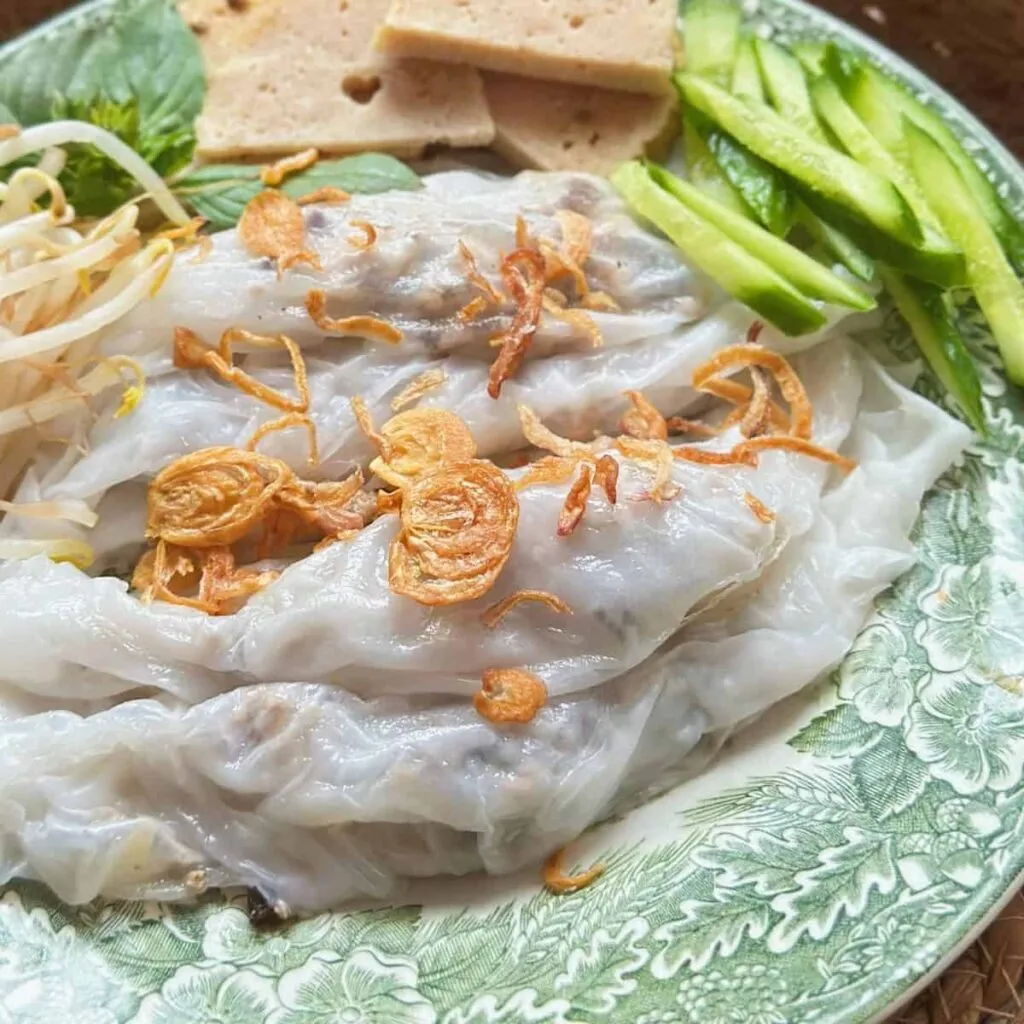
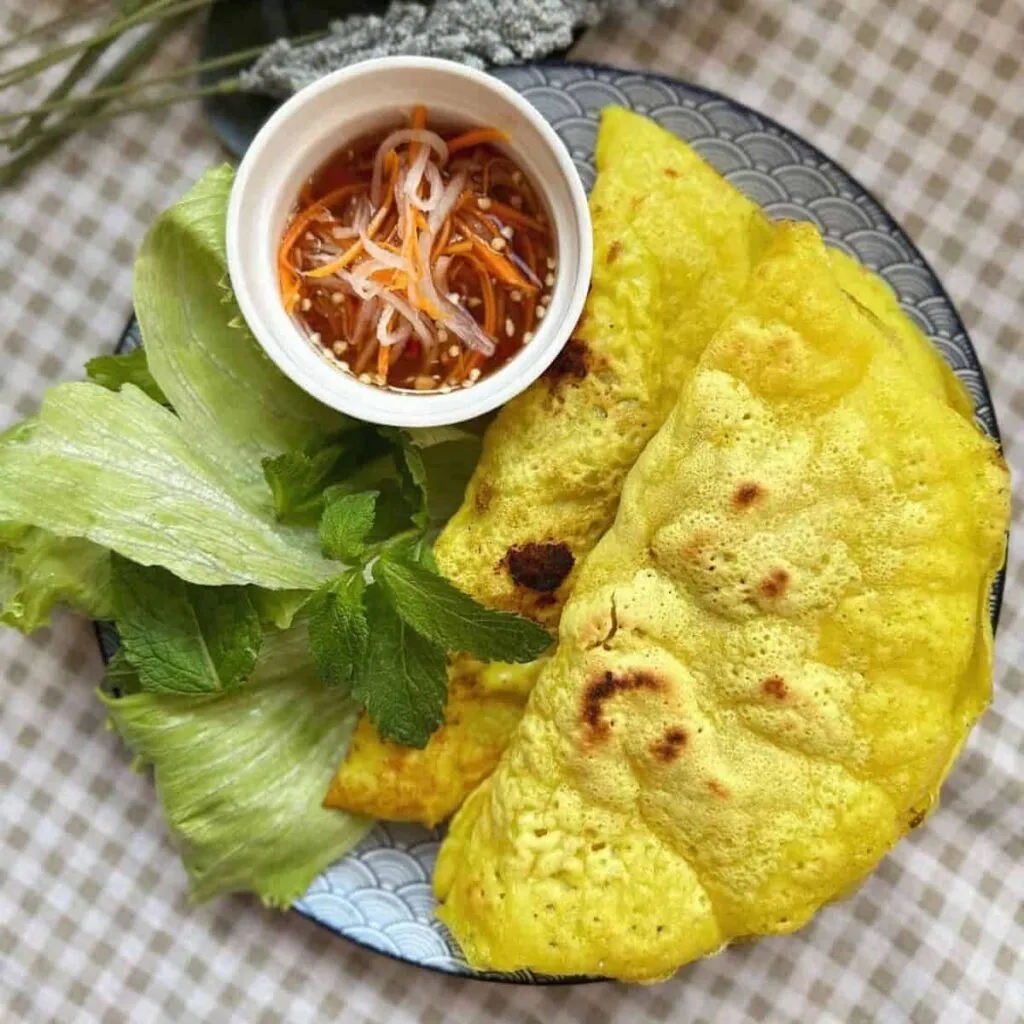


BEST Vietnamese Pâté for Banh Mi (Local Tips)
Equipment
- 1 Food Processor
- 2 non-stick pans
Ingredients
- 1 lbs chicken or pork livers (500g)
- 0.9 lb ground pork (20% fat) (400g)
- 2 tbsp minced garlic
- 2 tbsp minced shallots (optional)
- 2 tbsp store-bought crispy fried onions (optional)
- 1/4 tsp Vietnamese 5-spice powder
- 1/2 large onion (sliced or chopped)
- 1 stick butter (8 tbsp / 100g)
- 5 tbsp cooking oil
- 2 wedges Laughing cow cheese (optional)
- 2.5 tsp chicken powder (adjust to your taste)
- 1 tsp salt (adjust to your taste)
- ½ tbsp sugar (adjust to your taste)
- 1.5 tbsp black pepper powder (adjust to your taste)
- 2 slices sandwich bread (optional)
- 1.5 cup full-cream milk (375ml)
Instructions
Prepare the ingredients:
- To prepare the livers, remove the tough connective tissue or yellow/white fatty parts. Cut them into bite-sized pieces if you use pork livers.
- Soak the livers in whole milk for at least 30 minutes or refrigerate overnight. Strain and rinse the livers thoroughly to remove any remaining milk.
- Soak the sandwich in the leftover milk to soften it (about 15 minutes).
Cook the pâté:
- In a pan, heat cooking oil. Once hot, add minced shallots and stir-fry for approximately 30 seconds. Then, add minced garlic (be cautious as garlic can easily burn).
- Once the shallots and garlic turn golden and crispy, remove them quickly from the oil to prevent burning. Keep around 2 tablespoons of oil in the pan and add the livers.
- Cook the livers for around 7 minutes or until cooked but still slightly pink inside. Season the livers with chicken powder and five-spice powder. Set them aside.
- In another pan, melt the butter and cook the sliced onion until it becomes fragrant. Add the ground pork and stir-fry until it is just cooked. Next, add the cooked livers and the soaked sandwich to the ground pork. Stir the mixture until everything is well-combined.
- Season it with salt, chicken powder, black pepper, and sugar according to your taste. Let the mixture cool down for 30 minutes.
- Once the mixture has cooled, transfer it to a food processor. Add the fried shallots and garlic (including the oil), fried crispy onions (if available), and laughing cow cheese (optional) to the food processor.
- Process the mixture until it reaches your desired smoothness. Adjust the texture of the pate according to your preference.
- Transfer it to a container and refrigerate it to allow it to firm up before serving.
Steam the pâté (optional):
- To enhance the flavor and texture further, Vietnamese tradition often steam the pate for about 1 hour on medium-low heat or 7 minutes using an Instant Pot on low pressure.
- Before steaming, transfer the pate to a mold and cover it with cling film or aluminum foil to prevent water from getting in.
- After steaming, let the pate cool down. Then, chill it in the fridge before serving.
Notes
- Avoid overcooking livers to keep them from turning bitter and dry.
- For the perfect Vietnamese pâté with a touch of pink inside, let it cool completely after steaming and chill in the fridge before serving.
- Season the pâté to your liking once all the ingredients are thoroughly combined.
- To prevent the pâté from drying out, add a layer of melted butter on top. In traditional recipes, pork fat or bacon usually lines the mold, but I skipped this step for a healthier version.
-
When storing the Vietnamese pâté, divide it into smaller portions and store in Zip-Top Freezer Bags. Keep in the freezer for about 3 months and defrost the desired amount when needed.






